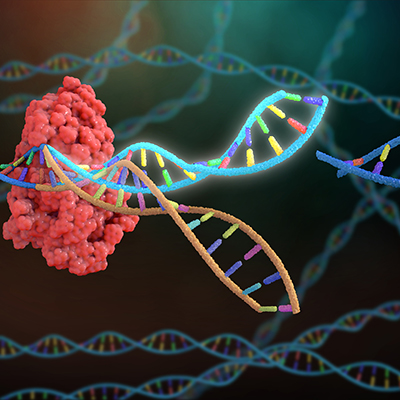October 12, 2022 -- Massachusetts General Hospital researchers have engineered a CRISPR-Cas9 variant that overcomes a previous restriction on the locations that DNA can be cut in the laboratory, suggesting molecular cloning approaches can be simplified.
CRISPR-Cas tools typically need to recognize a protospacer adjacent motif (PAM), a two to six base pair DNA sequence, to make a cut. The need for a PAM to immediately follow the DNA sequence targeted by the CRISPR-Cas nuclease has limited the locations that can be edited using the technology. Some Cas variants have reduced PAM restrictions but the requirement for the motif has remained a constraint.
In 2020, researchers at Massachusetts General Hospital published a paper in the journal Science about near-PAMless CRISPR-Cas9 variants based on Streptococcus pyogenes Cas9 (SpCas9). The engineered variants enabled unconstrained genome targeting.
Now, the researchers and other collaborators have published a follow-up paper that explores the use of the SpCas9 variant, named SpRY. Benjamin Kleinstiver, PhD, an assistant investigator at the Center for Genomic Medicine at Mass General Hospital, discussed the findings in a statement.
"We demonstrate that SpRY DNA digests -- or SpRYgests -- enable DNA cutting at practically any sequence, including a wide range that were previously untargetable with restriction enzymes or other CRISPR-Cas proteins. This new method permits researchers to cut DNA in a test tube at any DNA location of choice. The new capabilities offered by SpRYgests will accelerate and reduce the cost of various basic research applications, including for studies that could have eventual clinical implications," Kleinstiver said.
Writing in an October 6 article in the journal Nature Biotechnology, Kleinstiver and his collaborators describe SpRYgests using more than 130 guide RNAs sampling a wide diversity of PAMs. The work showed that SpRY is "PAMless in vitro and can cleave DNA at practically any sequence, including sites refractory to cleavage with wild-type SpCas9."
The researchers envision SpRYgests being widely applicable to typical molecular cloning approaches, for more complex cloning methods and for assembling next-generation sequencing libraries. If the team is right, SpRYgests can overcome the limitations of the restriction enzymes, such as dependence on short binding motifs, that are used to manipulate DNA in vitro today. Kathleen Christie, PhD, the postdoctoral fellow who led the research, has vowed never to use a restriction enzyme again.
To support the switch from restriction enzymes to SpRYgests, the team developed a "rapid and simple one-pot gRNA synthesis protocol." The protocol is intended to streamline SpRYgests' implementation, bringing down the cost and making the workflow comparable to that of restriction enzyme digests.
Copyright © 2022 scienceboard.net
Last Updated 10/12/2022 6:24:53 AM



